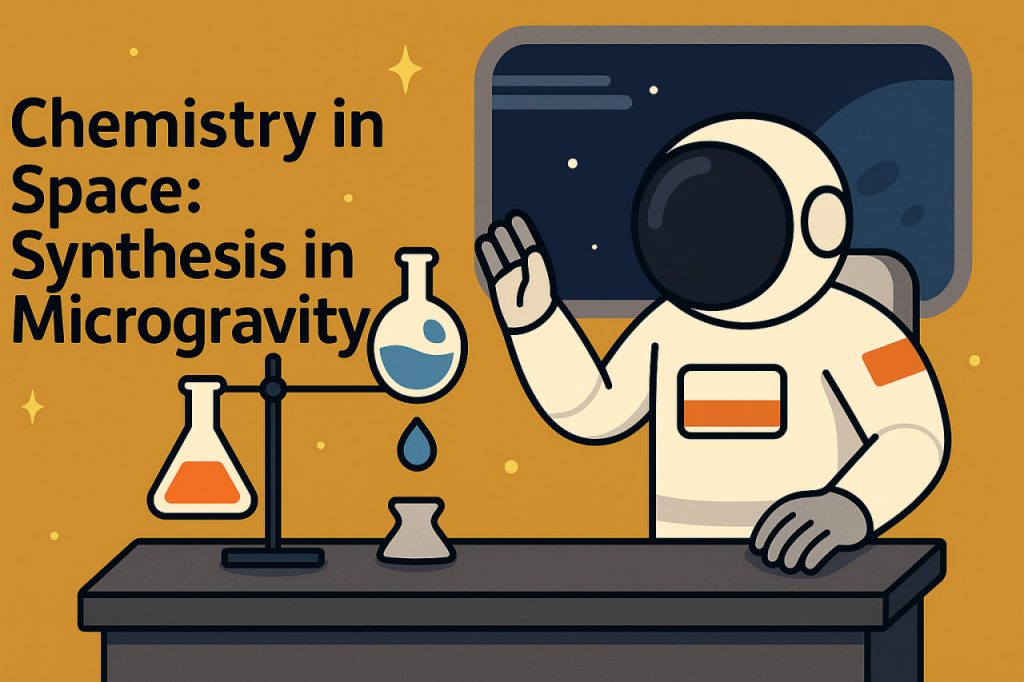Chemistry in space is a rapidly developing field that explores how chemical reactions behave under microgravity — the near-weightless conditions experienced aboard spacecraft and orbital laboratories. Without the influence of Earth’s gravity, many physical and chemical processes change dramatically, leading to new insights, unique materials, and potential breakthroughs in space exploration and industry.
How Microgravity Affects Chemistry
On Earth, gravity influences how liquids flow, how gases mix, and how solids settle. In microgravity:
- Liquids tend to form spherical droplets due to surface tension.
- Gas bubbles do not rise naturally, affecting boiling and fermentation.
- Solids do not separate from liquids as easily, changing crystallization and precipitation processes.
These differences mean that reaction rates, product purity, and even chemical pathways can be altered in space.
Crystallization and Materials Science
Microgravity allows the growth of highly ordered crystals without the distortions caused by sedimentation. This has important implications for pharmaceuticals, as purer and larger crystals can lead to more effective drugs. In materials science, researchers can create alloys and composites with improved properties that are difficult to achieve on Earth.
Organic Chemistry in Space
Experiments aboard the International Space Station (ISS) have shown that organic molecules — the building blocks of life — can form and behave differently in microgravity. This research helps scientists understand how prebiotic chemistry might occur on asteroids, comets, or other planets.
Fuel and Energy Production
In-situ resource utilization (ISRU) projects aim to synthesize fuel directly in space, using materials from asteroids or planetary atmospheres. Microgravity chemistry can improve efficiency in electrolysis, catalysis, and other reactions essential for sustaining long-term space missions.
Challenges of Space Chemistry
- Limited laboratory space and equipment aboard spacecraft.
- Safety concerns with volatile chemicals in a closed environment.
- Difficulty in controlling temperature and pressure precisely.
Despite these challenges, every experiment in space chemistry provides valuable data for future exploration.
The Future of Chemical Synthesis in Space
As humanity plans missions to Mars and beyond, chemistry in microgravity will be critical for producing medicine, materials, and fuels far from Earth. The continued development of space-based laboratories will expand our ability to perform complex reactions in orbit, unlocking new possibilities both in space and back on Earth.
Glossary
- Microgravity – A condition of very weak gravity, experienced in orbit.
- Surface tension – The elastic tendency of a liquid surface to minimize its area.
- Crystallization – The process of forming solid crystals from a solution or melt.
- Prebiotic chemistry – Chemical processes that lead to the formation of life’s building blocks.
- In-situ resource utilization (ISRU) – Using local resources in space to produce needed materials like fuel or oxygen.


